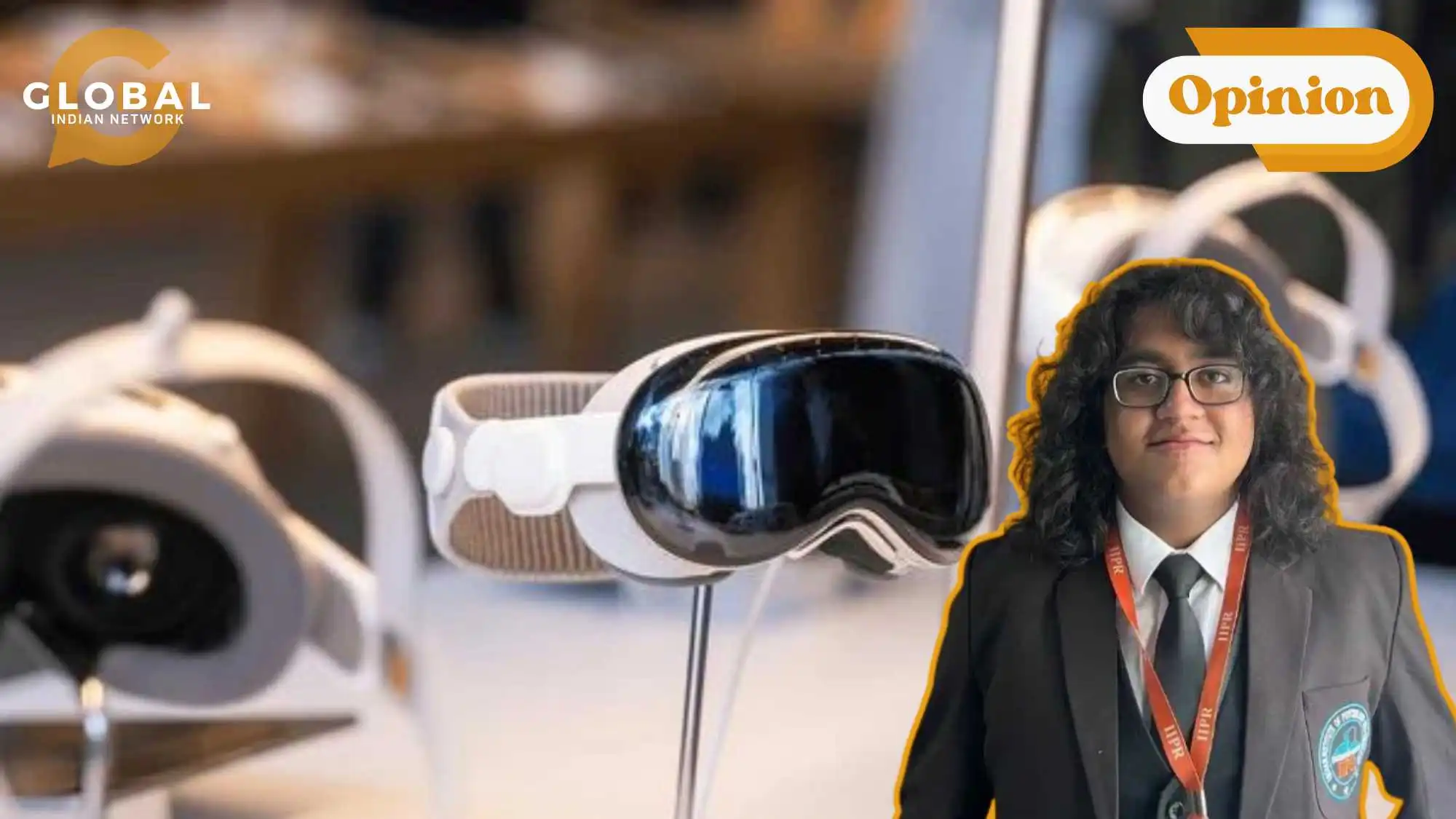The word “dystopia” evokes a resounding image, from barren wastelands to hellish landscapes. The concept of a digital dystopia was first introduced by Aldous Huxley in his novel The Brave New World. Since then, countless works have explored this theme and warned against its potential consequences, most notably Ready Player One. Set in the 2040s, the novel narrates the tale of a world that has collectively plunged into a virtual reality simulation to avoid the hardships of real life. If you are familiar with the book or the adapted movie, then you would know that Apple’s latest offering, the Vision Pro, is a device straight out of the digital dystopia that Ready Player One warns us of.
The Vision Pro, essentially a virtual reality (VR) headset, was launched by Apple as a spatial computing device that “blends digital content with the physical world." It is the first device to integrate virtual reality with the real world in a sort of seamless way. Through multiple cameras and sensors, the Apple Vision Pro displays everything you would normally see, and on top of that, it adds a layer of interface with apps, icons, and functionality, essentially making the real world your canvas. With floating browser windows, tools, and portable cinema screens that can be resized however you like, the device does have an exciting edge to it.
Additionally, the device allows you to control and change this canvas from your actual live environment to the middle of the Amazon, a Nordic fjord, or empty blackness. It even allows you to switch this virtual backspace to the moon, granting you control to bend 'reality’ to whatever you so desire.
But does it afford that control, or is it the other way around?
Although there is no denying that the headset is a technological marvel, it comes with a cost that is higher than the $3500 price tag. By fitting a screen 2 inches from your face, the Vision Pro serves as a permeable barrier between you and the outside world; the headset controls everything you see, hear, and interact with, allowing artificial systems a complete backdoor entrance into your life. In the last decade or so, smart devices have taken over our lives. Smartwatches buzz every time we get a notification, and billion-dollar companies tweak and analyse their algorithms to ensure endless scrolling.
While these issues are to be dealt with, the one theme of current-generation technology is that it can be switched off. If you get a notification on your phone while in the middle of a conversation, you simply have the option of flipping your phone and continuing the conversation. On the other hand, the Vision Pro has no physical power button and is a gadget that is designed to be worn and used all day.
Multiple studies have found that increased technology usage is linked with personal isolation, leading to a host of issues such as depression, anxiety, and stress. Surveys show that these numbers have increased dramatically since the pandemic, with over 30% of Americans being lonely, according to a new survey by the APA (American Psychiatry Association).
While smartphones and other devices are becoming increasingly disconnected from the real world, the Vision Pro is a far more solitary experience. When one puts on the headset, they are transported to an alternate reality, one in which they are completely alone. While the user maintains the ability to interact with people outside the device normally (if you discount the cartoonish visor on their head), it is rarely the case for the person on the other side. This disconnecting and isolating premise is what the Vision Pro threatens to achieve. Imagine a family dining together, but all members are deeply immersed in their own realities with no connection to each other despite being physically together.
While VR headsets have long existed before the Vision Pro, Apple’s invention might be a step in the wrong direction. The Cupertino giant has a knack for revolutionising technology in unexpected ways, with the meteoric rise of iPhones, smartwatches, or AirPods coming to mind. Similarly, the Vision Pro approaches virtual reality intending to globalise it. While the $3500 price tag is certainly a deterrent, it will not be long until other companies, or even Apple themselves, launch cheaper alternatives that are aimed at the mass market.
It is worth remembering that while the Vision Pro is still in its first iteration, it has already sold over 200,000 units in the United States alone. This eagerness to spend such large amounts of money further draws a parallel to Huxley’s The Brave New World, in which he forewarned that people would come to love the technology that disconnects them from the real world.
While we are still a ways away from the totalitarian reality depicted in Huxley’s novel, it is difficult to argue against the fact that the launch of the Apple Vision Pro is the first step towards that outcome. And it is certainly proof that the proponent for this digital dystopia is none other than the most influential tech company of all time.
Have you found this blog interesting? Let us know in the comments below.
If you have burning thoughts or opinions to express, please feel free to reach out to us at larra@globalindiannetwork.com.









